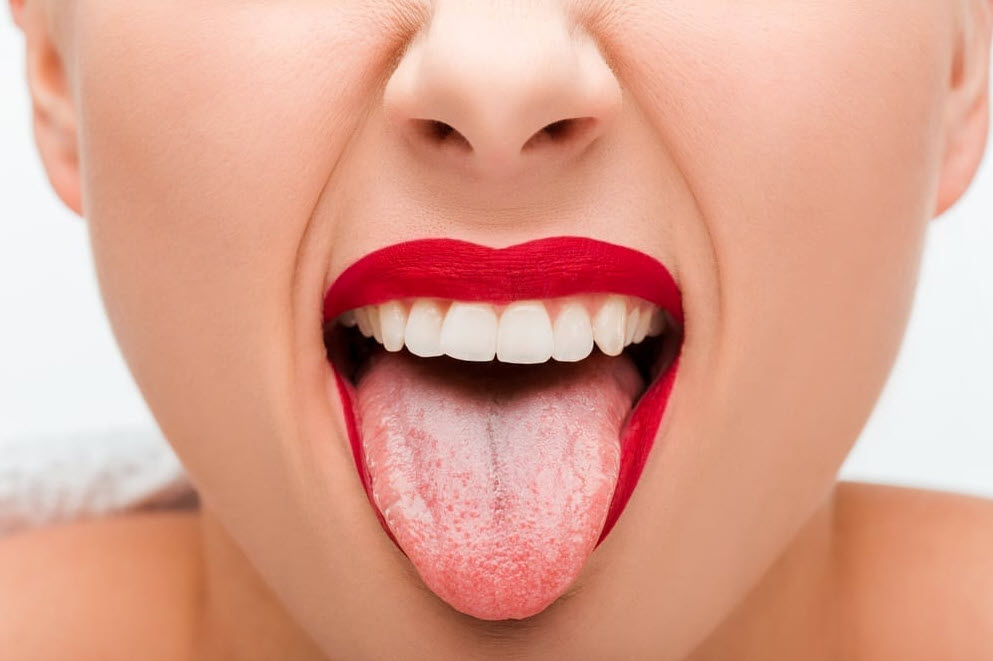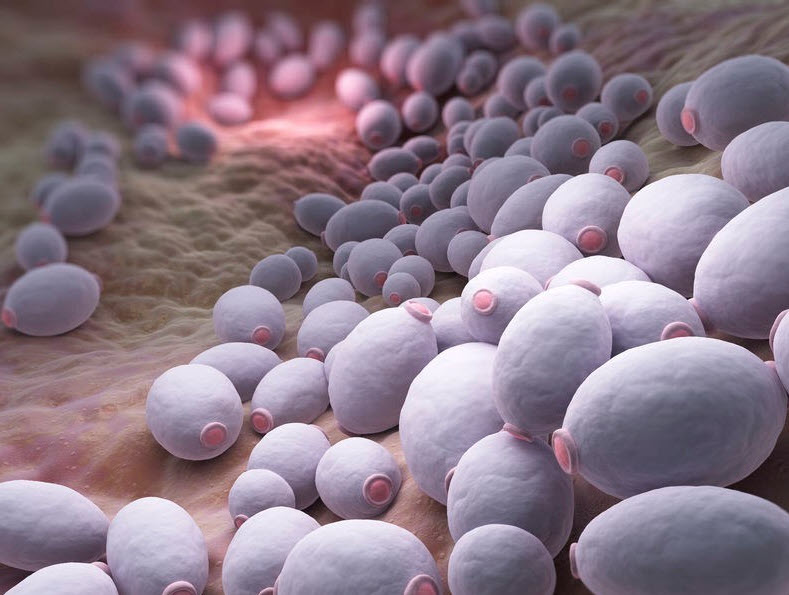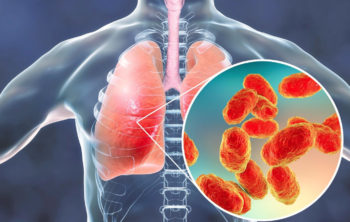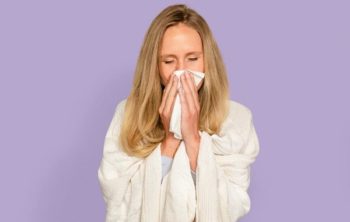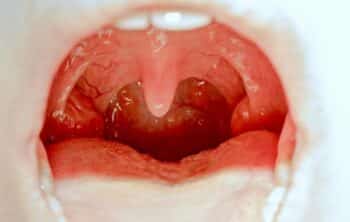Contents
Candidiasis: Types, Causes, Symptoms, Treatments and Home Remedies
Do you know, every person has candida (a type of fungus) in skin, mouth, esophagus and other organs of the body? But the interesting thing is that it is non-pathogenic condition and does not cause any symptoms. Body’s immunity and good bacteria maintain the growth of candida and keep it under control.
What if this candida grows uncontrollably? This situation is called Candidiasis and causes problems. Candidiasis is a fungal infection that affects various parts of the body. It can cause a wide range of symptoms, and may be difficult to treat. In this post, we’ll take a look at the different types of candidiasis, the causes, symptoms and treatments available. We’ll also discuss some home remedies that may help relieve the symptoms of candidiasis.
What is candidiasis?
When we elaborate the disease in detail, it is a fungal infection of the skin or mucosa membrane of the body. It can occur in any part of the body. Normally it is found at the outer part of the body especially in vagina and mouth. Mouth candidiasis is more commonly known as Thrush and Vaginal candidiasis is known as vaginal yeast infection.
Systemic candidiasis is also common, it can involve esophagus, stomach, GIT tract, heart, central nervous system and others organs. It is a serious health issue. The mortality rate in it with the immunosuppressant recipient is more than 30%.
What causes candidiasis?
There are more than 150 candida strains, in which 20 are found to be pathogenic in human. In which Candida albicans is the most common. Other common strains are candida glabrata, Candida tropicalis, Candida krusei, Candida parapsilosis, etc.
Candidiasis causes:
- Antibiotics: Usage of excess antibiotics kill bad bacteria along with good bacteria. This in result increases the amount of pathogen in the body.
- Steroid Therapy: Steroid is a lifesaving drug. So using steroid for a long time, suppress immunity system which indirectly promotes the growth of pathogens. This disease is a common complication of steroid therapy.
- Diabetes: It has been found in observations that chances of candidiasis increase with the increased blood sugar level. Exact pathogenesis is still unclear.
- HIV /AIDS: HIV and candidiasis go hand in hand with each other. About 50% of HIV positive patients also diagnoses with candidiasis.
- Organ Transplant: Rejection of transplanted organ is common. Surgeons have to advice immunosuppressant drugs to improve the chance of acceptance of organ; this indirectly supports the growth of candidiasis.
- Hormonal Therapy: With idiopathic region, it is quite a common complication of hormonal replacement therapy.
- Low birth weight: Children with low birth weight are likely to get infected with this.
- Chemotherapy: Chemotherapy reduces immunity to a very low level. Candidiasis and other infections are common in the patient going on the cycle of chemotherapy.
- Moist environment: Fungus can easily grow in moist environment. Thus this disease is common in Rainy season.
- Wet clothes: Moist environment is favorable for candidiasis. Wearing wet clothes for a long time increases the chance of the disease.
- Diet rich in simple carbohydrate: Diet with simple carbohydrate and sugar increases the chance of fungal infection.
Types of Candidiasis:
1. Candidiasis in vagina (yeast infection in vagina):
Candidiasis of vagina commonly called as the vaginal yeast infection or vaginal thrush. It is much more common than compare to male. Around 70 % of women suffer from it in some period of their life. It is more common in menopause.
2. Candidiasis in mouth:
Candida is naturally found in the mouth but the overgrowth of candida in the mouth is known as oral thrush. Patient of oral thrush can suffer from cracked lips or ulcer in mouth mucosa with abnormal white cheese like discharge.
3. Candidiasis in children:
Children with low birth weight are more susceptible for infection so it is more common in the first year of life. Chances of infection increase more if mother is on immunosuppressant therapy or positive with HIV or tuberculosis or there is insufficient supply of mother’s milk. In children, most common is diaper rash and mouth thrush. Systemic candidiasis can also happen to the child if the mother is positive for nipple candidiasis.
4. Candidiasis in male:
Candidiasis in male genitalia is not so common in compare to woman. But if occur, it usually involves prepuce (head of penis) only. It can cause inflammation of the head of the penis which is known as balanitis and can produce symptoms like itching, cheese discharge, lumpy discharge under the prepuce skin, pain in urination, pain in sex, pain in masturbation and sometimes ulcer on penis skin.
Symptoms of candidiasis:
Different types of candidiasis shows different symptoms which are as follows:
1. Mouth candidiasis (Mouth thrush):
Crack at the corner of the mouth and whitish lesion on the mucosa membrane of mouth and tongue are the two main symptoms of mouth thrush and sometimes it is the only symptom. Occasionally there may be burning sensation in the mouth which can be misdiagnosed as bacterial infection. Rarely sore and bitter taste of mouth and feeling of scalding of mouth with hot liquid may also present.
2. Cutaneous candidiasis (Skin candidiasis):
In this, rashes and red-purple patches may present on the affected site. White substance on these lesions and severe Itching which causes erythema, are common symptoms. Cutaneous candidiasis is mostly found in areas which are moist and covered with skin fold like armpit, elbow, knee, groin region, between fingers etc.
3. Esophagus candidiasis:
We can diagnose it by endoscopy. Some symptoms that can provide some clues are pain and discomfort in swallowing, dry mouth, nausea, vomiting, weight loss, fatigue, sore throat, etc.
4. Vaginal candidiasis (Yeast infection of vagina):
It is one of the important infections in females. Itching with white cottage cheese like discharge is main symptom. Other symptoms may include:
- Cotton cheese discharge
- Thick white discharge
- Sometimes watery discharge
- Itching in vagina and vulva
- Staining of vaginal discharge on cloth
- Soreness
- Redness
- Burning sensation in the vagina
- Pain in sex
- Pain after sex
5. Nipple candidiasis:
Breastfeeding moms can catch candida infection in the nipple and this can also pass to baby through breastfeeding. Common symptoms are red, crack and dry nipple with stabbing pain in deep tissue of the breast.
6. Nail candidiasis:
Nails which are infected with candida are mostly white or light yellow, easily breakable or split. It can be chronic and acute. Acute candidiasis is extremely painful.
Complications of candidiasis:
- Fungal infection: Untreated disease provides a perfect environment for further fungal infection. It can complicate disease with multi stain fungal infection or deep tissue fungal infection.
- Bacterial infection: Moist and immunosuppressive conditions allow bacteria to grow. It can also complicate disease with the combination of infections.
- Candidemia: Untreated yeast infection can get into the bloodstream. This is known as Candidemia or Fungemia. It is a serious health issue. Candidemia produces symptoms like bacterial and viral infection. Laboratory tests and clinical differential diagnosis is necessary. Some common symptoms of Fungemia are fever with shivering, rigor, nausea, vomiting, confusion, hypotension, altered mental condition etc.
- Transit candidemia: Fungus transits to systemic organs. Symptoms of transit candidemia depend upon the infected organ and localize lesions. It is also a medical emergency because fungus can also enter in the central nervous system. Untreated candidemia and transit candidemia may be fatal.
- Resistant candida: Some strains show resistance towards anti-fungal medicines. This is a very complicated condition.
Prevention of candidiasis:
- Chlorhexidine mouthwash: Chlorhexidine mouthwash has been found preventive in oral candidiasis.
- Probiotics: It is still unclear that the use of probiotics helps in candidiasis or not. But probiotics have been found to improve vaginal flora.
- Don’t use douche: Douche interferes with vaginal flora. It washes out bad bacteria along with good bacteria and neutralizes vaginal ph.
- Vaginal wash: Soap and detergents are more bases for vagina. So always wash vagina with the specific vaginal wash.
- Antibiotics: Limit the use of antibiotics and try to improve the immunity to the Ayurvedic and herbal medicines.
- Hygiene: Menstruation hygiene is an important key for the healthy vagina. Always use sanitary pads and change it more often.
Treatment of candidiasis:
Treatment of the disease depends upon the immunity and underlying disease of the patient. Mainline of treatment would be topical, oral or intravenous antifungal medicines. Duration of treatment depends upon the severity of the disease. It can be from one week to one year. Treatment of fungal infection is one of the difficult cases, because of high reoccurrence chances.
1. Medications to treat candidiasis:
There are many over-the-counter medications available for candidiasis, and candidiasis responds well to anti fungal medication. A wide variety of prescription drugs are available to treat candida albicans infections as well, with the most effective being fluconazole (Diflucan) and oral antifungals. Patients with candida infections typically respond within 10 days, however some strains have become resistant to antifungal medication so it is important that your doctor is aware of your symptoms.
There are also certain home remedies known to fight candida infection including yogurt or douching with tea tree oil or grapefruit seed extract diluted in water that can prevent thrush from developing after you finish your medication. You can also eat yogurt regularly as a means of preventing candidiasis from recurring.
In addition to home remedies, there are some over-the-counter medications that can be used for candidiasis, including anti fungal oral lozenges and sprays containing nystatin or miconazole that your doctor may prescribe for you.
2. Home remedies for candidiasis:
- Use of onion: Onion has Sulphur compound. Application and orally consumption of onion can reduce chances of the disease and other skin infection.
- Use of garlic: Garlic is effective in treating fungal and bacterial infection both. Taking one and two small cloves of garlic is effective. Decoction of garlic or using it in your diet, both are effective. Market supplement of garlic is also available.
- Coconut oil: Coconut oil contains medium chain fatty acid which shows antimicrobial action. Appling coconut oil on the skin as a daily routine prevents skin infection. Oral consumption of one or two tablespoons of coconut oil is also a good option.
- Honey: Honey is rich in anti-oxidants and contains multivitamins. It nourishes skin and improves immunity.
- Use of yogurt: Yogurt is a natural source of Lactobacillus acidophilus, which produces lactic acid and prevents yeast infection.
Conclusion:
Candidiasis is a fungal infection that affects various parts of the body. The most common symptoms of candidiasis are skin rash, redness, itching, and burning. In more severe cases, it can cause mouth sores, vaginal infections, or nail fungus. If you experience any of these symptoms, please see your doctor for diagnosis and treatment. There are many effective treatments for candidiasis, including prescription antifungal medications and over-the-counter remedies. Home remedies such as yogurt or garlic may also be helpful in mild cases. Thanks for reading!
Read more: Hypoglycemia (Low Blood Glucose): Symptoms, Causes and Treatment
Disclaimer:
Above article is only for knowledge purpose. Please contact your healthcare provider before using any of above medicine or method. For any query or personal consultation according to your health condition please contact your doctor.

